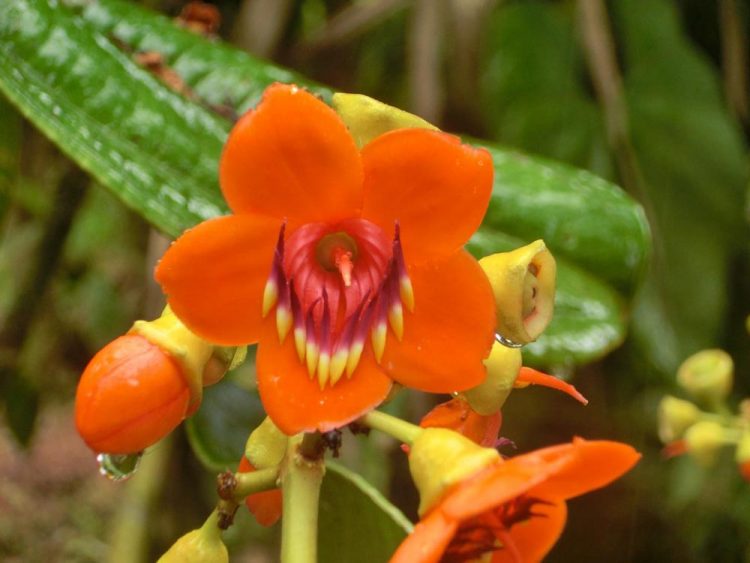How flowers adapt to their pollinators

This is a flower of the bee-pollinated species Meriania hernandoi from the Ecuadorian cloud forest. Credit: Agnes Dellinger
Flowering plants are characterized by an astonishing diversity of flowers of different shapes and sizes.
This diversity has arisen in adaptation to selection imposed by different pollinators including among others bees, flies, butterflies, hummingbirds, bats or rodents.
Although several studies have documented that pollinators can impose strong selection pressures on flowers, our understanding of how flowers diversify remains fragmentary.
For example, does the entire flower adapt to a pollinator, or do only some flower parts evolve to fit a pollinator while other flower parts may remain unchanged?
In a recent study, scientists around Agnes Dellinger from the Department of Botany and Biodiversity Research from the University of Vienna investigated flowers of 30 species of a tropical plant group (Merianieae) from the Andes.
“Each of these plant species has adapted to pollination by either bees, birds, bats or rodents”, says Dellinger. Using High-Resolution X-ray computed tomography, the research team produced 3D-models of these flowers and used geometric-morphometric methods to analyse differences in flower shape among species with different pollinators.
The researchers could show that flower shapes have evolved in adaptation to the distinct pollinators, but that flower shape evolution was not homogeneous across the flower.
In particular, the showy sterile organs of flowers (petals) adapted to the different pollinators more quickly than the rest of the flower: the reproductive organs have evolved more slowly.
“This study is among the first to analyse the entire 3-dimensional flower shape, and it will be exciting to see whether similar evolutionary floral modularity exists in other plant groups”, concludes Dellinger.
###
Publication in Communications Biology:
Modularity increases rate of floral evolution and adaptive success for functionally specialized pollination systems; Agnes S. Dellinger, Silvia Artuso, Susanne Pamperl, Fabián A. Michelangeli, Darin S. Penneys, Diana M. Fernández-Fernández, Marcela Alvear, Frank Almeda, W. Scott Armbruster, Yannick Staeder, Jürg Schönenberger; in Communications Biology.
DOI: 10.1038/s42003-019-0697-7
Media Contact
All latest news from the category: Life Sciences and Chemistry
Articles and reports from the Life Sciences and chemistry area deal with applied and basic research into modern biology, chemistry and human medicine.
Valuable information can be found on a range of life sciences fields including bacteriology, biochemistry, bionics, bioinformatics, biophysics, biotechnology, genetics, geobotany, human biology, marine biology, microbiology, molecular biology, cellular biology, zoology, bioinorganic chemistry, microchemistry and environmental chemistry.
Newest articles

Economies take off with new airports
A global study by an SUTD researcher in collaboration with scientists from Japan explores the economic benefits of airport investment in emerging economies using nighttime satellite imagery. Be it for…

CAR T–cell immunotherapy targets
Pan-cancer analysis uncovers a new class of promising CAR T–cell immunotherapy targets. Scientists at St. Jude Children’s Research Hospital found 156 potential CAR targets across the brain and solid tumors,…

Stony coral tissue loss disease
… is shifting the ecological balance of Caribbean reefs. The outbreak of a deadly disease called stony coral tissue loss disease is destroying susceptible species of coral in the Caribbean…





















